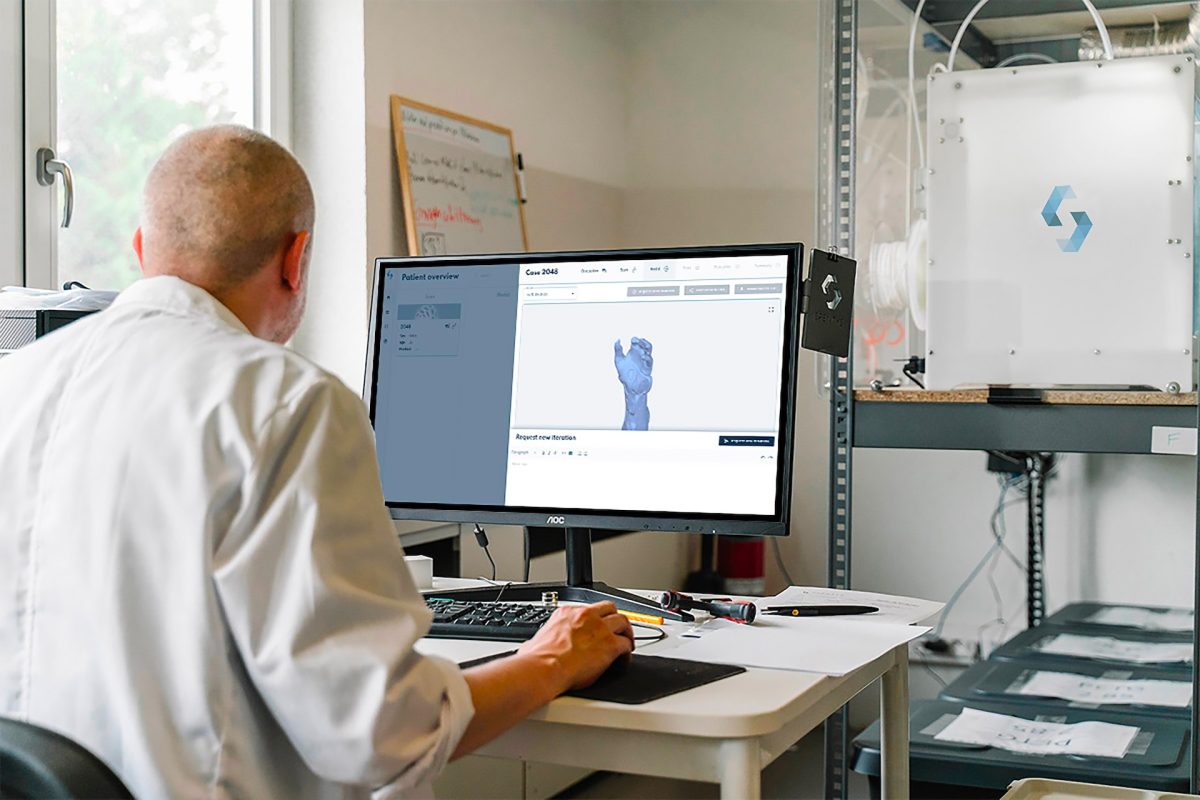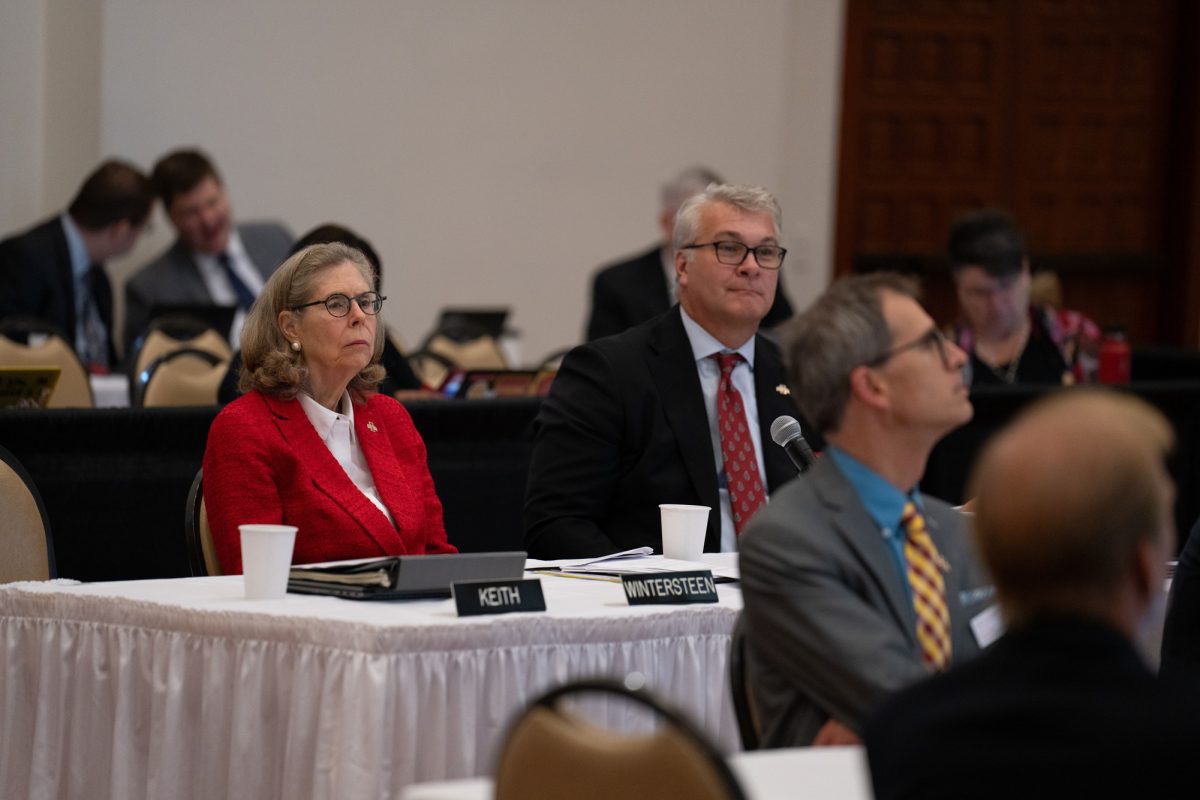Researchers from Iowa State and the University of California, Santa Barbara, have worked together to fundamentally change the power of light-based 3D printing.
Iowa State researchers and professors in mechanical engineering Adarsh Krishnamurthy, Baskar Ganapathysubramanian and Soumik Sarkar have been studying single resins that can create different materials and properties when exposed to different light wavelengths and exposures.
According to 3D Sourced, digital light processing is a process that works by using a projector, which creates a photopolymer resin one layer at a time. The selected areas are solidified according to the 3D printer model, which leaves the surrounding areas uncured. Once one layer has been completed, the 3D printer pulls one layer height away and the process repeats with a different material.
The researchers are on their way to producing two material properties with the same resin. A type of 3D printing that uses light rather than heat to harden liquid resin into plastic layers, enabling multi-material printing.
“That’s revolutionary in terms of materials for 3D printing,” Krishnamurthy, associate professor of mechanical engineering and lead researcher at Iowa State, said during a press conference.
When asked about this comment, Krishnamurthy said, “What do we [Krishnamurthy and his team] think is revolutionary about this? We are closing the gap between printing materials with new chemistries, and that is not easy.”

According to The National Science Foundation (NSF), a $72.5 million investment from the U.S. NSF will support 37 teams to create materials to address societal changes and develop scientific challenges.
This project is one of 37 teams that NSF announced in September to award the Iowa State researchers $800,000 to use artificial intelligence and machine learning algorithms, which help them develop new resins to create multi-material printing.
“By integrating numerous research disciplines across NSF as well as federal and industrial partnerships, this program truly revolutionizes the design, discovery and development of new materials for addressing urgent national needs,” NSF Director Sethuraman Panchanathan said in the article. “Some of these have been used to formulate highly sensitive therapeutic proteins to mitigate the primary effects of spinal cord trauma, carbon dioxide capture to address climate change and advanced quantum materials and semiconductors for powerful computation and communication needs, to name just a few.”
Krishnamurthy and his team have been working on 3D printing projects for nearly four years. This project is one of many projects this team has in manufacturing.
“These projects have been a collaboration between engineers, material scientists and chemists,” Ganapathysubramanian, a professor in engineering and associate chair for research at Iowa State, said. “The task here in this project is to design new materials and chemistries that can be extruded and to create shapes on demand that exhibit interesting properties.”
Ganapathysubramanian and Krishnamurthy said modeling their concepts on a computer system has helped them throughout the project in numerous ways.
“If you think of machine-critical 3D printers, these things are really expensive,” Ganapathysubramanian said. “You don’t want to make something and throw it away. So by running it on the computer, mimicking our design on the computer, we can explore lots of what-if scenarios.”
The computer also offers very quick designs. If the research wants a certain shape, the computer can abstract the design or shape in seconds. The research team can then quickly determine if the shape is manufacturable or not.
Lastly, computer systems allow the capability of cybersecurity.
Ganapathysubramanian said printers are being used in places of importance holding confidential information. “Suppose I needed to print something for an airplane or very personal things in a hospital. Perhaps it would be easy for something to attack it.”
So, the computer can allow researchers to test how the product performs, make sure the actual 3D printer will produce a working product, be very quick to develop ideas and designs and be safe to use against attackers.
The chemistry collaborators at The University of California, Santa Barbara, are developing a resin with at least two molds. Shining a certain wavelength of light will allow the resin to solidify into a soft material. On the other hand, shining a different wavelength of light will solidify a slightly harder material.
“It is the same resin, but depending on what light you put in, it could be soft or hard,” Krishnamurthy said. “So now what we can do is, in the same mold, we are projecting both wavelengths of light and in wavelength one will be soft, and wavelength two will be hard.”
One application Krishnamurthy and his team are looking to use their new revolutionary 3D printing technology in the future is the direct growth of cell cultures.
The human body has bones, which are hard, and tissues, which are soft. In labs, scientists and doctors are growing cells on slides of glass to replicate cell growth in the body.
“Growing cells on glass slides is not how it would be in or on an actual body,” Krishnamurthy said. “So we wanted to replicate hard regions which would mimic bones and soft regions which would mimic things like tissue, so they can see how the cells would grow in this way instead of growing cells on glass.”
The technology cannot do exactly as the human body, but it marks an advancement in health care.
“Putting these things in the human body is very far off,” Ganapathysubramanian said. “But I think these are more useful for diagnostics and biological implications.”
Krishnamurthy said he could not have studied this research alone, and collaboration was the key to the group’s analyses.
“There is such a notion of tight collaboration,” Krishnamurthy said. “There are chemistry people, engineering folks, feedback groups and identifiers.
Ganapathysubramanian said he hopes his research inspires Iowa State students and looks forward to seeing future generations collaborate on projects as his team does. He also thanked Iowa State and their help in allowing such collaborations.
“Iowa State is very forward-looking; I think that is very important to understand in terms of encouraging and supporting multiple faculty projects in physics, life science and liberal arts who all work on very interesting things,” Ganapathysubramanian said. “I love manufacturing, and this is one of the many things Iowa State is doing.”














